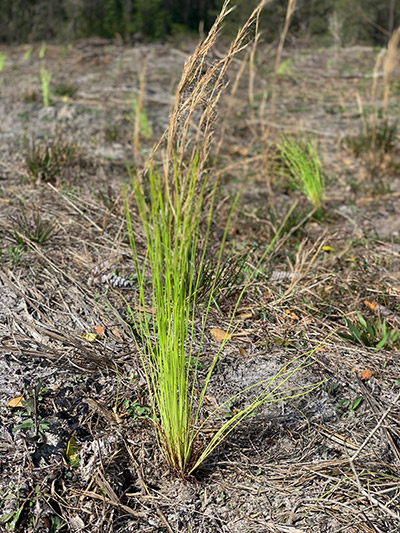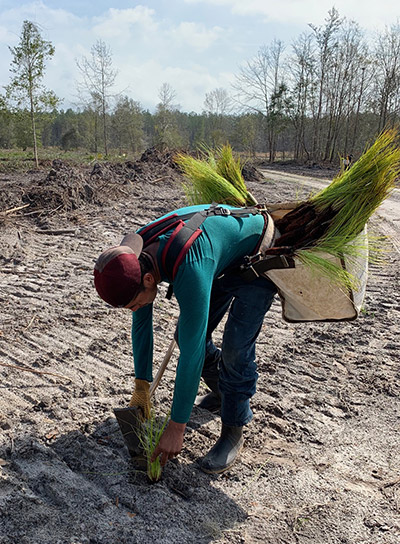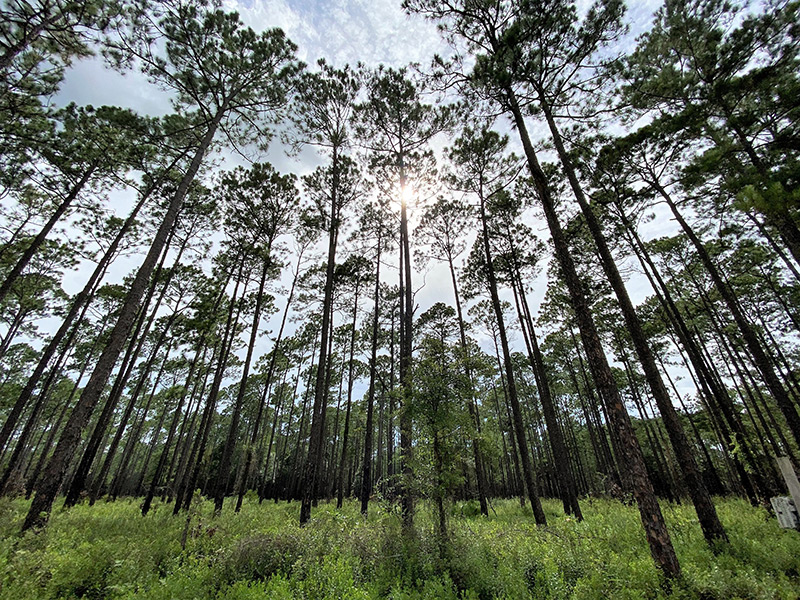White Oak encompasses thousands of acres of habitat critical for local wildlife. The wetlands, forests, and waterways are home to many species, including gopher tortoises and deer.
We work hard to be good stewards of our property, through a robust Natural Resources program that includes:
Prescribed burn program
The state of Florida is the lightning strike capital of the U.S. According to the National Weather Service, Florida has, on average, 3,500 cloud-to-ground lightning flashes per day. Each one of those strikes has the potential to start a fire when the conditions are right. As part of the management of our natural resources at White Oak Conservation, we conduct prescribed fires in our forested habitats to reduce hazardous vegetative fuel accumulation that, if ignited by a lightning strike, could cause a wildfire and pose a risk to our natural resources and surrounding areas.
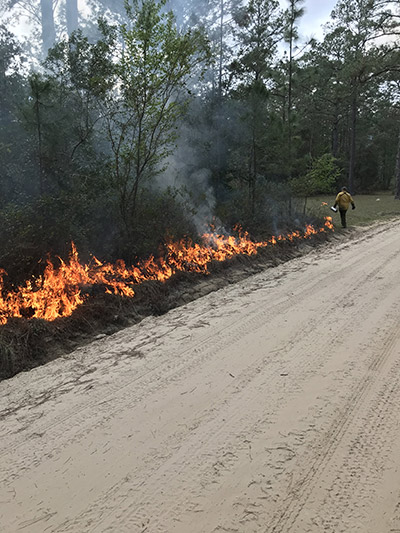
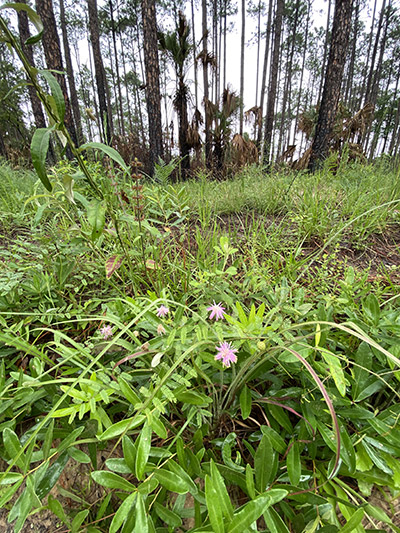

Another benefit of prescribed burns is that many native plants and animals are dependent upon forested areas. They have evolved with, and depend on, the occurrence of fire as a natural disturbance to maintain their habitat. These fires thin the forest, allowing for wildlife migration. The fires also help seeds sprout and help manage invasive plant species that are not adapted to fires. In 2019, White Oak conducted prescribed burns on 1,130 acres and will continue the practice in the future.
Bat houses and monitoring
White Oak has 10 bat houses located throughout the property, including three BCM Rocket Roost bat houses. These bat houses are a special design meant to mimic a dead tree roost. This style of house attracts a wider range of bat species and can hold approximately 120 bats. Bat houses provide a safe environment and give females a secure, warm place to raise their young. This is important since most female bats only have one pup each year, meaning bat populations grow very slowly.
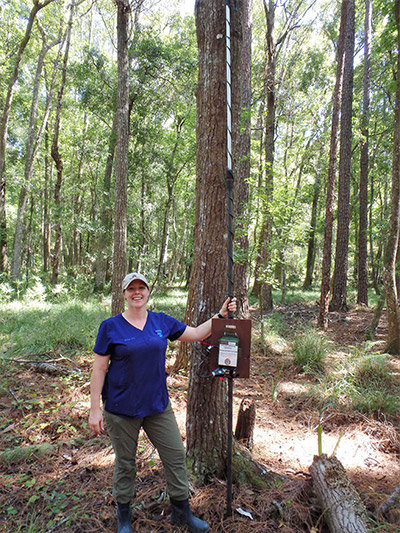
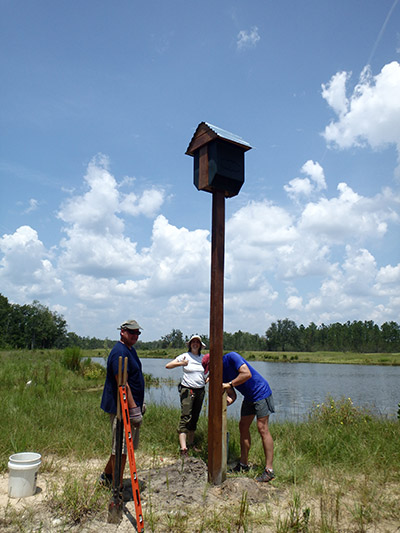
Bats are one of nature’s best pest control. A single bat can eat up to 1,200 mosquito-sized insects every hour. They are also useful pollinators and their guano is a great fertilizer.
In 2019, White Oak partnered with the Florida Fish and Wildlife Conservation Commission to participate in their Long-term Bat Monitoring Program. This program allows Florida Fish and Wildlife staff to work with the White Oak team to collect data on bat populations at White Oak over a 10-year period. The data collected is through bat calls or acoustic data. Because so little is known about the bat species in Florida, this acoustic data will allow for a species list to be compiled and to learn what species are present during different times of the year. Additionally, by collecting data over a long period of time, White Oak will be able to better understand the health of the bat populations and observe population trends. To date, nine species of bats have been recorded at White Oak.
Food plots
Food plots benefit many types of wildlife. They can also assure that wildlife species have adequate food supplies in the spring and summer months for reproduction and raising their young. White Oak has established nine food plots throughout the property. It is another way we support native wildlife and sustainable habitats.
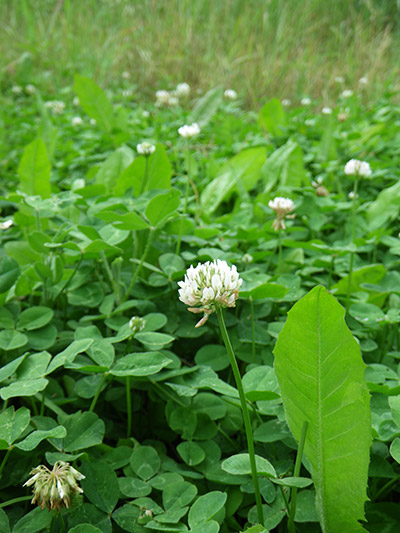
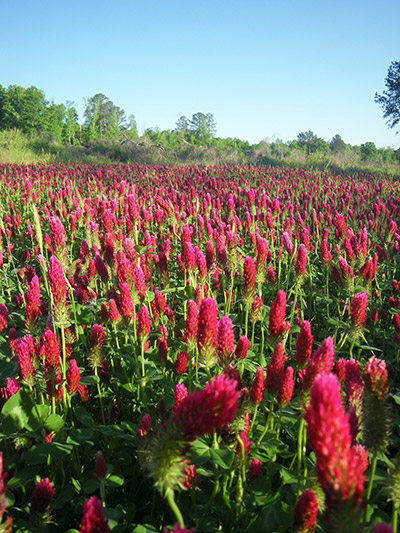
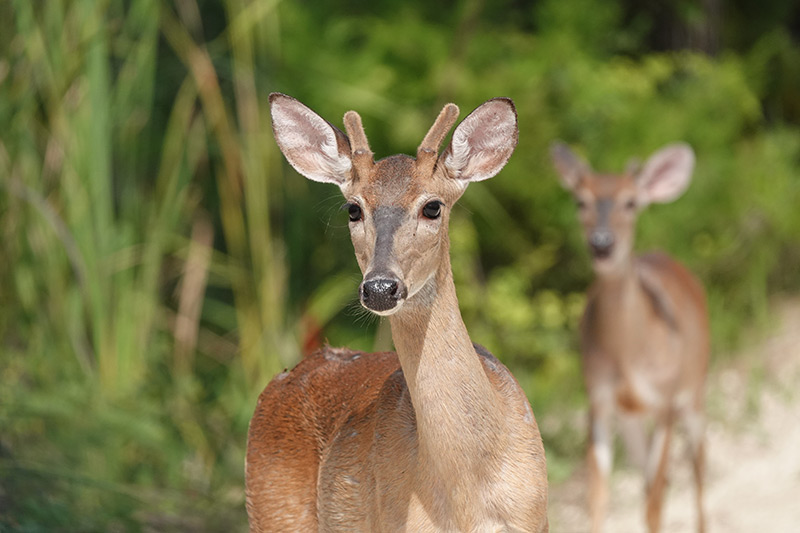
Beehive maintenance
Bees are one of the most important pollinators in the world. They pollinate 33% of the food we eat. They are also important for plants and wildflowers that require pollination to propagate and disperse across the landscape.
In 2018, White Oak installed four beehives near our organic garden. One year later, our Culinary Team, which manages the hives, harvested three gallons of honey. Currently, White Oak has 15 hives located around the property, and in 2020 we harvested 13 gallons of honey!
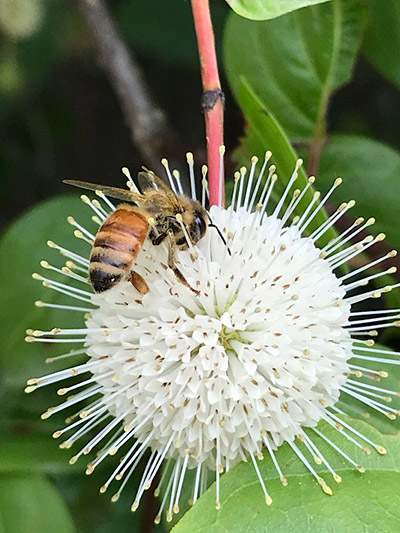
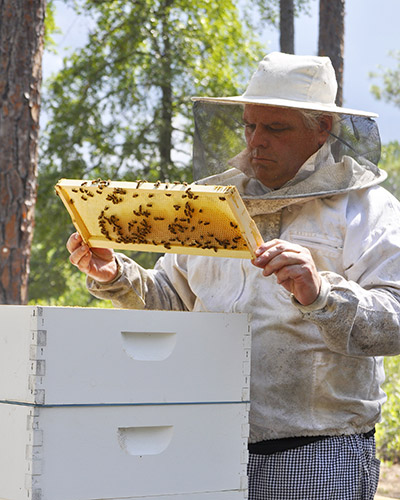
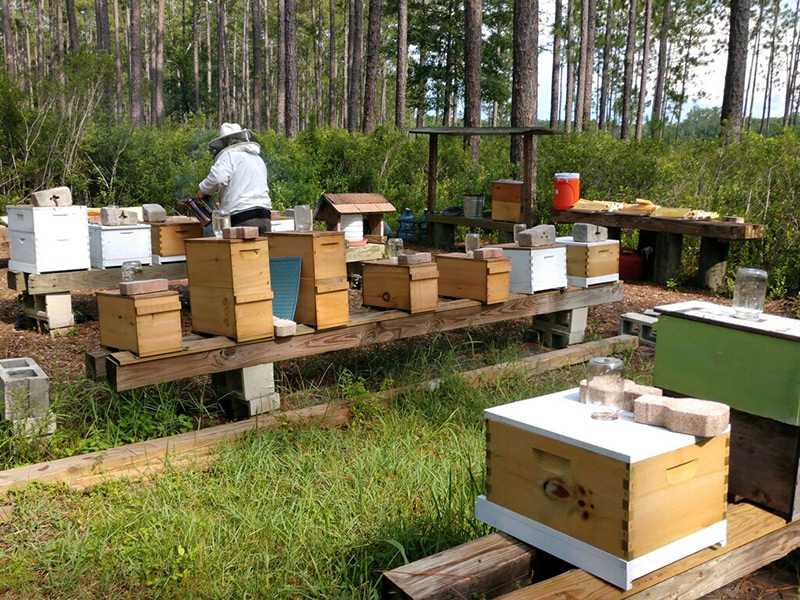
Longleaf Pine Restoration
The longleaf pine (Pinus palustris) is native to the Southeastern United States. Historically the tree’s range covered 90,000,000 acres. In the late 19th century, longleaf pines were among the most sought-after timber trees in the country. Due to clear-cutting practices, the tree’s range has been relegated to 5% of its original range, and along with it, a loss of biodiversity. Longleaf pine forests are known for their high levels of native plant diversity and provide habitat for native species such as gopher tortoises, red-cockaded woodpeckers, and indigo snakes.
White Oak has joined the effort to restore longleaf pine ecosystems. Land that had been clear cut has been planted with 50,000 longleaf pine seedlings, and prescribed burns in other areas will help restore the forests and the species that inhabit them.
